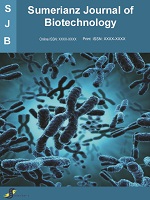Sumerianz Journal of Biotechnology

Online ISSN: 2617-3050
Print ISSN: 2617-3123
Quarterly Published (4 Issues Per Year)
Journal Website: https://www.sumerianz.com/?ic=journal-home&journal=32Archive
Volume 2 Issue 10 (2019)
Physico-Chemical Analysis of Domestic Water Used by the Community of College of Agriculture and Its Environs, Maiduguri, Nigeria
Authors : Gwana Adamu Mohammed ; Abdullahi Abubakar Biu ; Mu’azu Abdullahi Kofar Na’isa ; Abubakar Aliyu ; Hamra Abatcha Ahmed ; Baba Mala Mustapha
Abstract:This research study focuses on water sanitation and its environmental security and hazards; study was conducted on Physico-chemical analysis of domestic water used by the community of College of Agriculture and its environs, Maiduguri. The methods used were as described by Cheesbrough [1], Gwana, et al. [2] and Association of Analytical Chemists [3]. 200 mls of water sample each from the 8 water stations (A to H) were sampled; colour, tastes, pH, temperature, turbidity, mean concentration of some heavy metals, macro-elements and ions analysed each in triplicates were determined each in triplicate. The results obtained revealed that the colour and organoleptic (aesthetic) of the water samples were normal, with exception station E. The pH was within the ranges of 6.8 to 8.3, temperature (22 to 32 OC) and turbidity ranged from 1 to 4 TU. The mean concertation levels of the metals and ions in sample from the water stations; A ranged from 0.07 to 186 µg / l, B (0.01 to 108 µg / l), C (0.03 to 172 µg / l), D (0.01 to 122 µg / l), E (0.01 to 68 µg / l), F (0.03 to 102 µg / l), G (0.01 to 187 µg / l) and station H ranged from 0.02 to 98 µg / l. Metals and ions not detected in the water sampled from the stations were; Copper and Lead in station C, Copper in statin D, and Fluorite in station F, G and H respectively. Conclusively, only water from station E (313 TU / ml) exceed the standard recommended values for safe drinking water, but all the parameters determined in this study are within the recommended values by WHO. There is the need for sanitising measures, as recommended by WHO methods, in the community to have safe drinking water and their domestic activities within the said study area the world at large.


